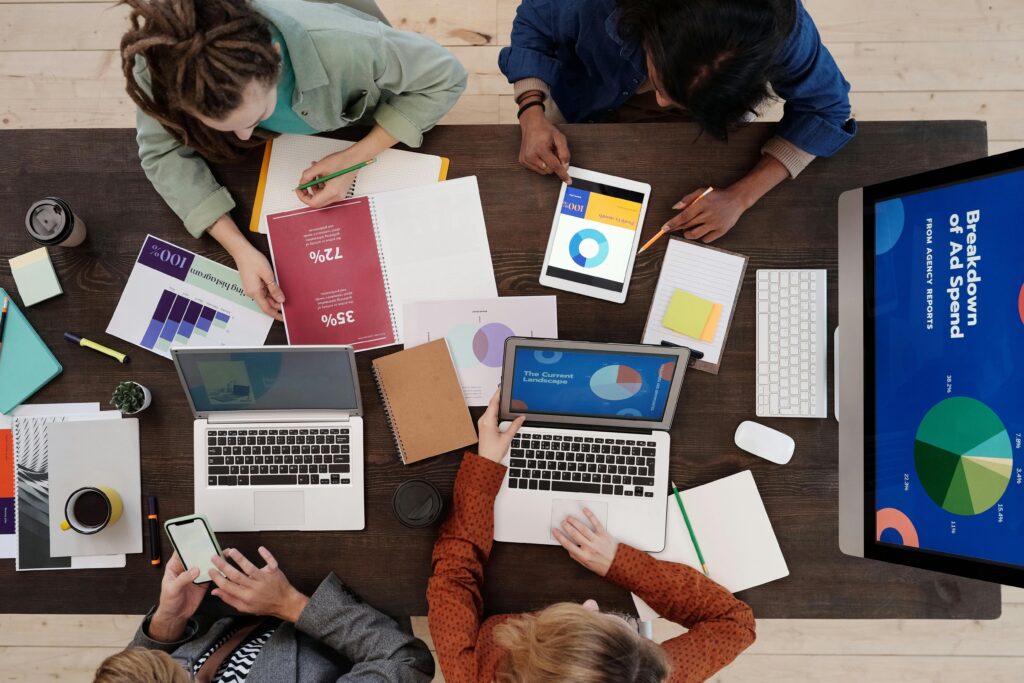
Top 5 Latest Technology Trends You Should Know About
Top 5 Latest Technology Trends You Should Know About
1. Artificial Intelligence and Machine Learning
1.1 Overview of AI and ML
Artificial Intelligence (AI) refers to the simulation of human intelligence in machines that are programmed to think like humans and mimic their actions. Machine Learning (ML) is a subset of AI that allows systems to learn and improve from experience without being explicitly programmed.
- Historical context and evolution: AI has evolved from rule-based systems in the 1950s to modern machine learning and deep learning algorithms.
- Current applications: AI and ML are already transforming industries like healthcare (predictive diagnostics), finance (fraud detection), and customer service (chatbots).
1.2 Advancements in AI Technologies
- Natural Language Processing (NLP): AI has improved in understanding and generating human language, making chatbots and virtual assistants more effective.
- Image and Speech Recognition: AI-driven systems are now able to identify objects in images and understand speech with accuracy rivaling humans.
- AI in Predictive Analytics: AI is enabling more accurate predictions in areas like stock market trends, climate forecasting, and risk management.
1.3 Ethical Considerations and Challenges
- Bias in AI algorithms: AI systems can inherit biases from their data, leading to unfair or discriminatory outcomes.
- Privacy concerns and data security: The widespread use of AI requires careful management of personal data to prevent misuse.
- The future of AI regulation: Governments are working on creating frameworks to regulate AI while balancing innovation and ethical concerns.
2. Internet of Things (IoT)
2.1 Understanding IoT
The Internet of Things (IoT) refers to the network of interconnected devices that can collect and exchange data.
- Components: IoT consists of physical devices (sensors, appliances), network connectivity, and cloud storage for processing data.
- How IoT connects devices: Smart devices communicate with each other through the internet, allowing remote control and data exchange.
- Examples of IoT: Smart thermostats, wearable fitness trackers, and connected cars.
2.2 Impact on Industries
- IoT in healthcare: Remote patient monitoring, wearable health devices, and smart medical devices are revolutionizing healthcare services.
- Smart homes and energy management: IoT is enabling energy-efficient homes with smart lighting, appliances, and thermostats.
- IoT in manufacturing: IoT enables predictive maintenance, inventory tracking, and supply chain optimization in manufacturing industries.
2.3 Security Risks and Solutions
- Vulnerabilities: IoT devices are often targeted for hacking due to weak security standards.
- Enhancing security: Encryption, multi-factor authentication, and regular software updates are essential for securing IoT devices.
- Legislation: Governments are focusing on creating standards and regulations to improve IoT security and privacy.
3. 5G Technology
3.1 What is 5G?
5G is the fifth generation of wireless technology, offering significantly faster speeds and lower latency compared to previous networks.
- Comparison with 4G and 3G: 5G offers faster speeds (up to 100 times faster than 4G), lower latency, and greater capacity.
- Global rollout: Many countries are currently rolling out 5G, with varying degrees of availability, especially in urban areas.
3.2 Benefits of 5G
- Enhanced speed and connectivity: 5G allows for faster download/upload speeds, improving experiences in areas like gaming, streaming, and remote work.
- Low latency applications: Real-time applications like remote surgery and autonomous vehicles rely on 5G’s low latency for seamless operation.
- Potential for new services: The increased speed and capacity open up possibilities for innovations in AI, IoT, and smart cities.
3.3 Challenges and Limitations
- Infrastructure requirements: Building 5G infrastructure requires significant investment in new towers and equipment.
- Health concerns: Some public health groups have raised concerns about potential risks from electromagnetic radiation, though there is no conclusive evidence.
- Regulatory hurdles: Governments are working on spectrum allocation and regulatory frameworks for 5G deployment.
4. Blockchain Technology
4.1 Introduction to Blockchain
Blockchain is a decentralized, distributed ledger technology that records transactions across many computers to ensure security and transparency.
- How blockchain works: Transactions are stored in “blocks” and linked in a “chain,” using cryptography to ensure data integrity.
- Key components: Blocks, chains, nodes, and miners are all part of the blockchain process.
4.2 Applications Beyond Cryptocurrency
- Supply chain management: Blockchain enhances transparency and traceability in supply chains, reducing fraud and inefficiencies.
- Healthcare: Blockchain can secure patient records and streamline medical data sharing while ensuring privacy.
- Smart contracts: Blockchain-based contracts automatically execute when conditions are met, reducing the need for intermediaries.
4.3 Future of Blockchain Technology
- Trends in development: Blockchain is expanding beyond cryptocurrencies, with applications in healthcare, finance, and even voting systems.
- Integration with other technologies: Blockchain is likely to combine with AI, IoT, and 5G to drive further innovation.
- Challenges: Widespread adoption faces hurdles like scalability, energy consumption, and regulatory concerns.
5. Augmented Reality (AR) and Virtual Reality (VR)
5.1 Defining AR and VR
- AR (Augmented Reality): AR overlays digital content on the real world, enhancing real-time experiences through devices like smartphones and smart glasses.
- VR (Virtual Reality): VR creates an immersive, simulated environment that users can interact with using headsets and controllers.
- Market trends: The AR and VR market is growing rapidly, with industries like gaming, education, and healthcare adopting these technologies.
5.2 Applications in Various Fields
- Education and training: AR and VR are used to simulate real-world scenarios for training purposes in fields like medicine, aviation, and engineering.
- Gaming and entertainment: AR and VR are creating new, immersive gaming and movie experiences.
- Real estate: Virtual tours powered by VR are transforming how homes and properties are showcased.
5.3 Future Prospects and Challenges
- Technological advancements: Improvements in hardware (lighter, more affordable devices) and software will enhance the AR/VR experience.
- User experience: AR and VR are still working to improve accessibility and reduce motion sickness issues.
- Ethical considerations: The impact of AR/VR on privacy, security, and social interaction will need to be addressed as the technology matures.
Conclusion
The latest technology trends—AI, IoT, 5G, blockchain, and AR/VR—are revolutionizing industries and personal lives. Staying informed about these trends can help individuals and businesses remain competitive in an ever-evolving tech landscape.
FAQs
- What is the most significant technology trend currently?
AI and machine learning are considered the most transformative, with their applications in every industry. - How can businesses leverage these technology trends?
Businesses can adopt AI for automation, IoT for efficiency, 5G for speed, blockchain for security, and AR/VR for improved user engagement. - What are the potential risks associated with these technologies?
Risks include data privacy concerns, security vulnerabilities, and the potential for ethical issues, such as bias in AI and privacy breaches in IoT. - How do these trends affect everyday consumers?
Consumers will benefit from faster internet, smarter devices, immersive experiences, and better healthcare through the adoption of these technologies. - What should I do to keep up with technology trends?
Regularly read tech news, attend industry events, and explore online courses to stay up-to-date with these evolving trends.


